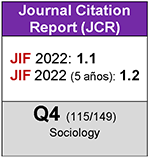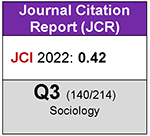Models of public action in an asymmetric society
DOI:
https://doi.org/10.5477/cis/reis.113.109Keywords:
Social Change, Collective Action, Civic Participation, AssociationsAbstract
Following Coleman’s statement about contemporary society being asymmetric, the purpose of this paper is to assess the differents kinds of public action that recur in present-day societies. Generally speaking, political and sociological literature has given priority to public action dominated by associations, which are observed as the protagonists of the defence of citizenry in an asymmetric society. In this respect, the design of public policies aimed at strengthening and expanding associative activity is legitimated. The main reason for this type of policy is that the decline of associative activity has often been linked with a decline in the democratic fabric of a particular community. In the second part of this paper, we suggest that far from producing this decline, we can confirm the emergence of other forms of participation which, while not starting out from the hypothesis of an associative movement, do share the political scenario with associations. We also demonstrate that both public administrations and civil associations are reporting on this type of participation, which makes its emergence both possible and easy.
Downloads
Downloads
Published
How to Cite
Issue
Section
License
Copyright (c) 2024 Revista Española de Investigaciones Sociológicas

This work is licensed under a Creative Commons Attribution-ShareAlike 4.0 International License.
Permite Compartir — copiar y redistribuir el material en cualquier medio o formato, Adaptar — remezclar, transformar y construir a partir del material para cualquier propósito, incluso comercialmente.








